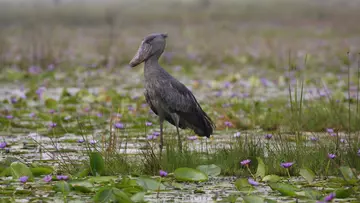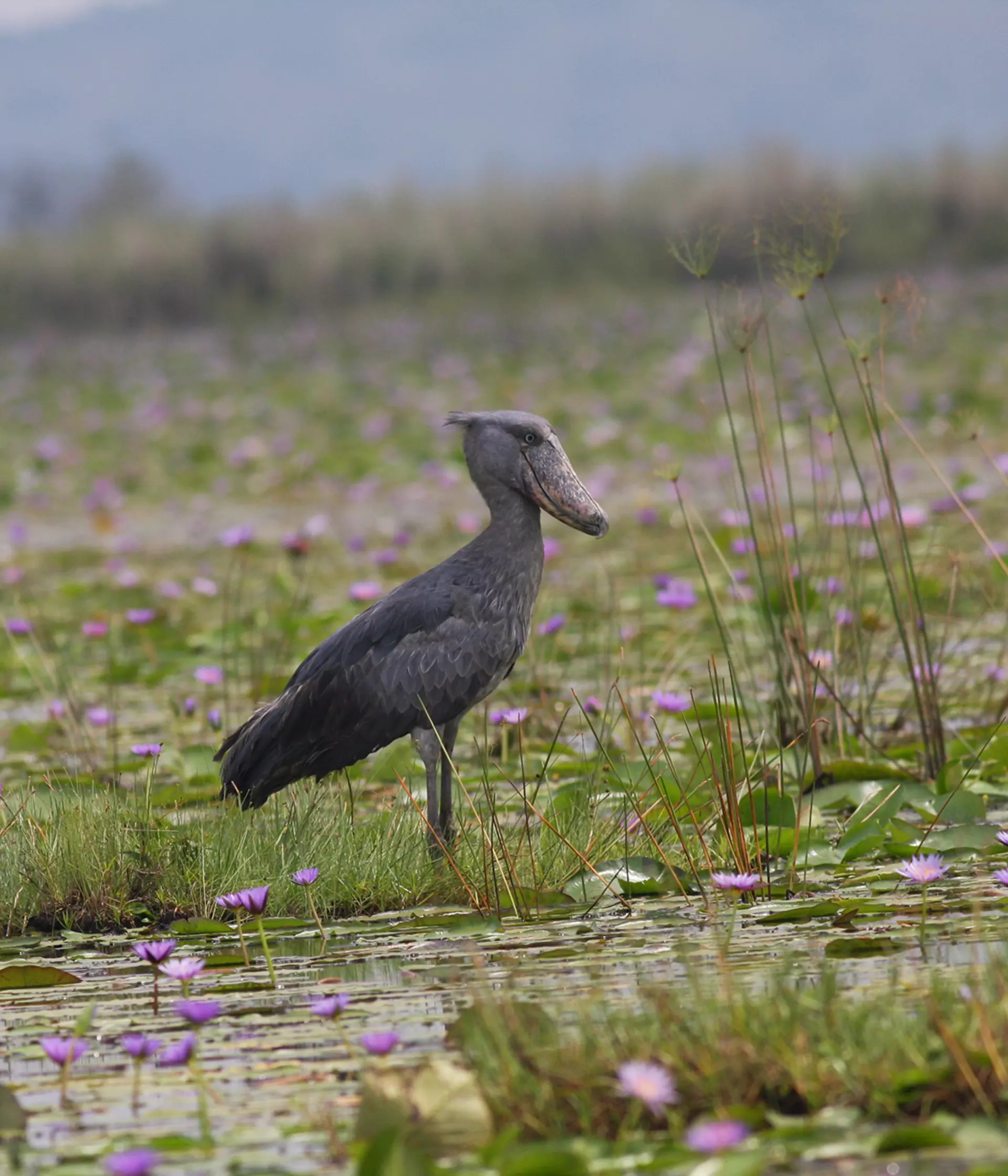
ZSL
Zoological Society of London
Birds are found across the globe and have adapted to almost every environment. But they have also been declining at a worrying rate, and some species are the only surviving representatives of a whole avian group. If they disappeared, we would be losing an irreplaceable part of evolutionary history.
The EDGE top 100 birds list was launched in 2014 to identify the most Evolutionarily Distinct and Globally Endangered birds in the world. Judith Mirembe, one of our 2017 Segré-EDGE Fellows, tells us why she chose to work with one of the most unusual looking birds from the list – the shoebill.

As a child I actually dreamt of becoming a cardiologist, but I started bird watching after high school and my interest grew from there. I enrolled at university and pursued a degree in Environmental Science; I felt like conservation was where I wanted to be.
The Segré-EDGE Fellowship has been a great opportunity for me to learn from the diverse experiences of other Fellows and share different perspectives on conservation, and my project aims to conserve the Shoebill – a large water bird – in the Mabamba Bay wetland, Uganda.
The shoebill has a unique ‘shoe-shaped’ bill, which gives it an almost prehistoric appearance. It has a large range and is found in eight countries across Africa. However, it only exists in small localised populations around swamps and wetlands, and is classified as Vulnerable by the IUCN Red List of Threatened Species.
Why is the shoebill under threat?
It is in decline due to threats such as habitat destruction, pollution, nest disturbance, hunting, and capture for the live bird trade. As a result, the global population is currently estimated at only 5,000-8,000 birds.
Shoebill conservation is so important. They are umbrella species whose protection will lead to the conservation of wildlife in its wider habitat; they are a valuable tourist attraction and thus a source of livelihoods for the locals, and they help in balancing the ecosystem as they prey on lung fish, frogs and other aquatic creatures.
How can we conserve the shoebill?
The focus of my work to conserve the Shoebill is on working with local communities that know and appreciate the role of the Shoebill, enabling them to manage their own resources sustainably. The project aims to: map the wetland to identify boundaries and Shoebill strongholds; deliver awareness activities amongst the local community on the threats to biodiversity in Mabamba Bay; provide community training to develop practical skills such as identifying and monitoring Shoebill populations, status, resources, and habitat; and provide reports and feedback to authorities, including information pertaining to the illegal wildlife trade.
Through ZSL’s EDGE of Existence Programme, I’ve been given the opportunity to further my skills in conservation action planning and leadership. I hope that, by the end of my Fellowship, information gathered can be used to protect other Shoebill populations and raise awareness of their plight in Mabamba, Makanaga and surrounding areas.
Climate change and human activity have pushed our precious planet to its limit, causing the devastating loss of so many habitats and species. From lab to field, hands on and behind the scenes, we’re leading the future of conservation, shaping agendas and influencing change to support better life, health and living for people and wildlife.
